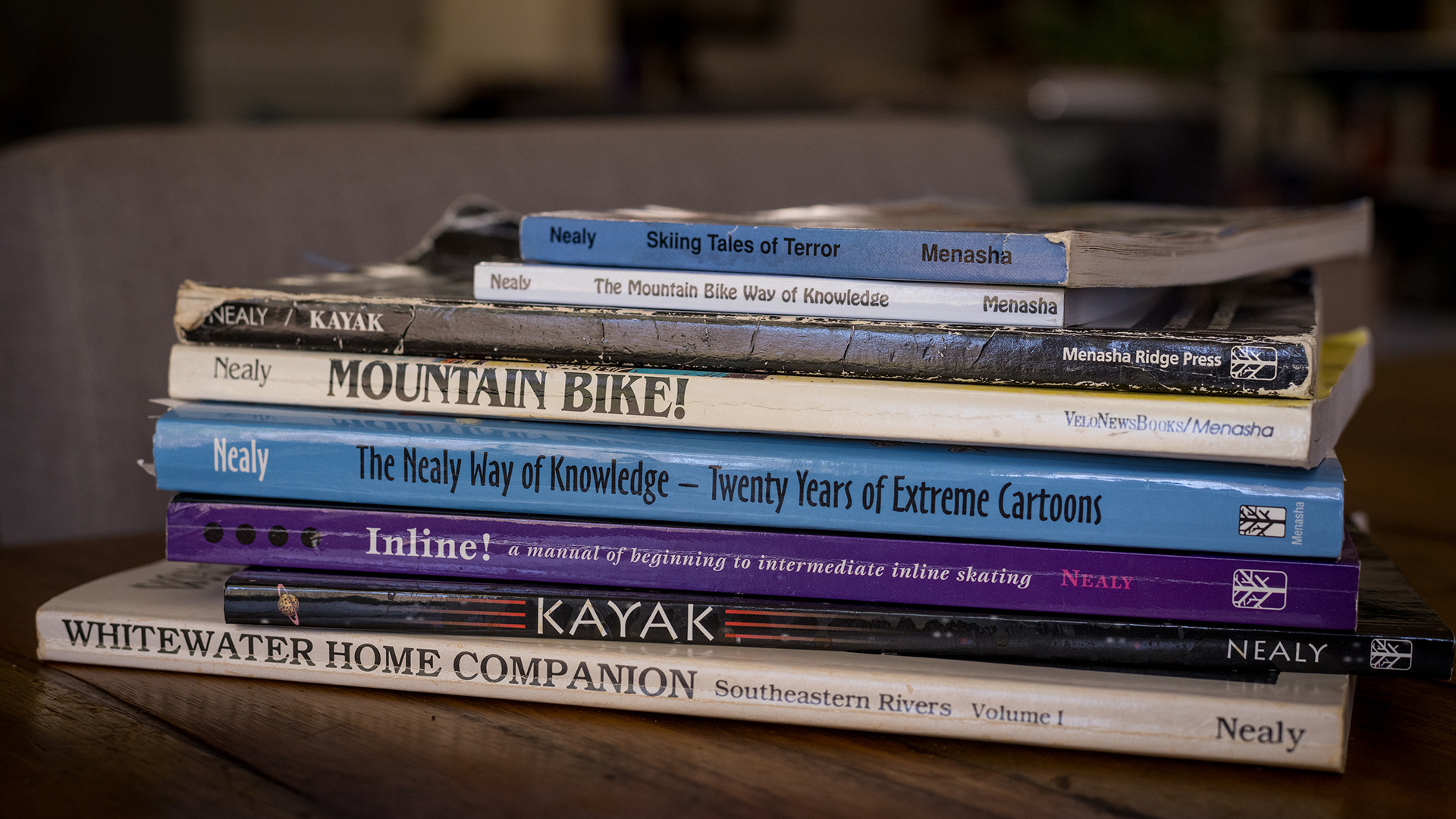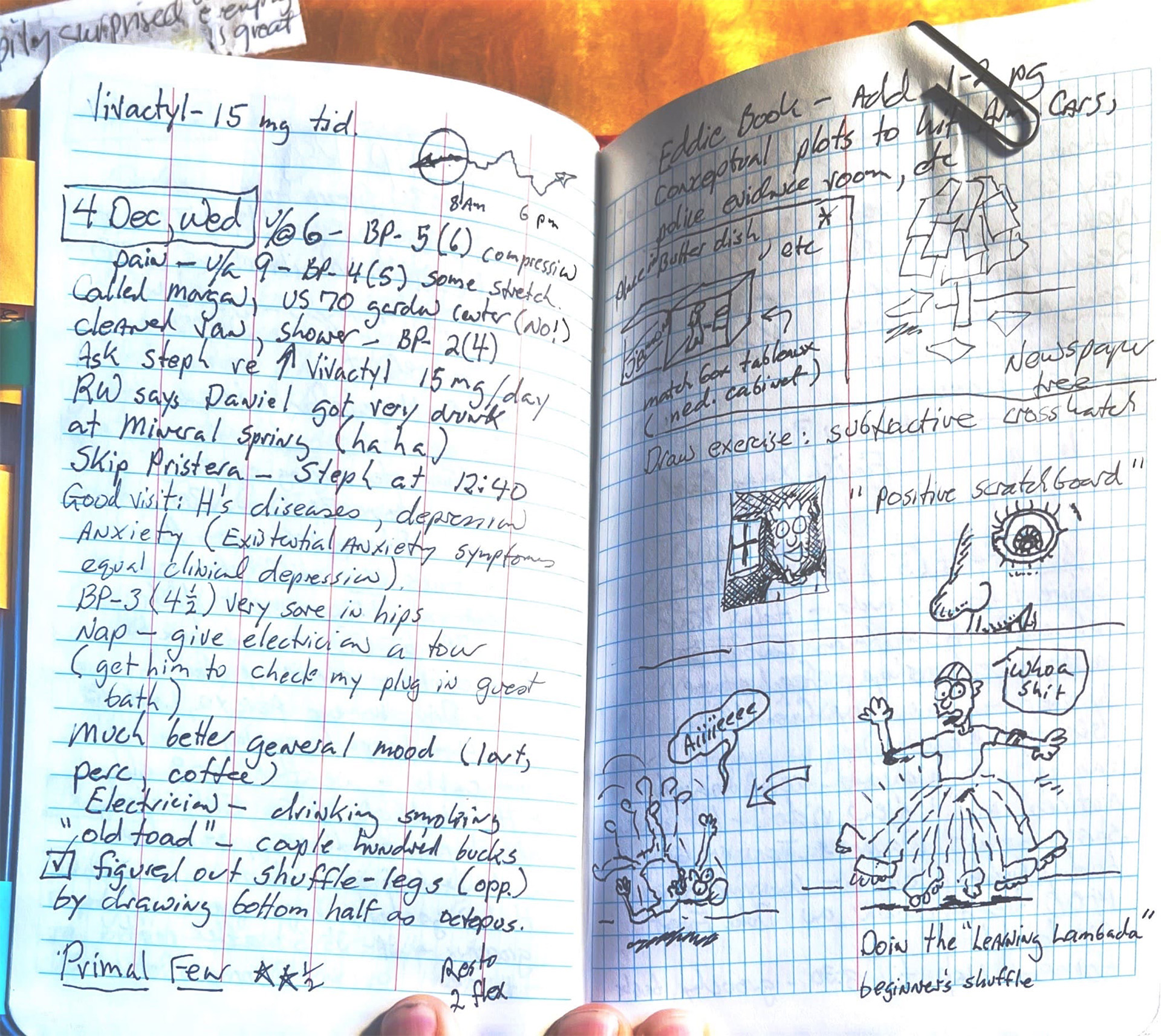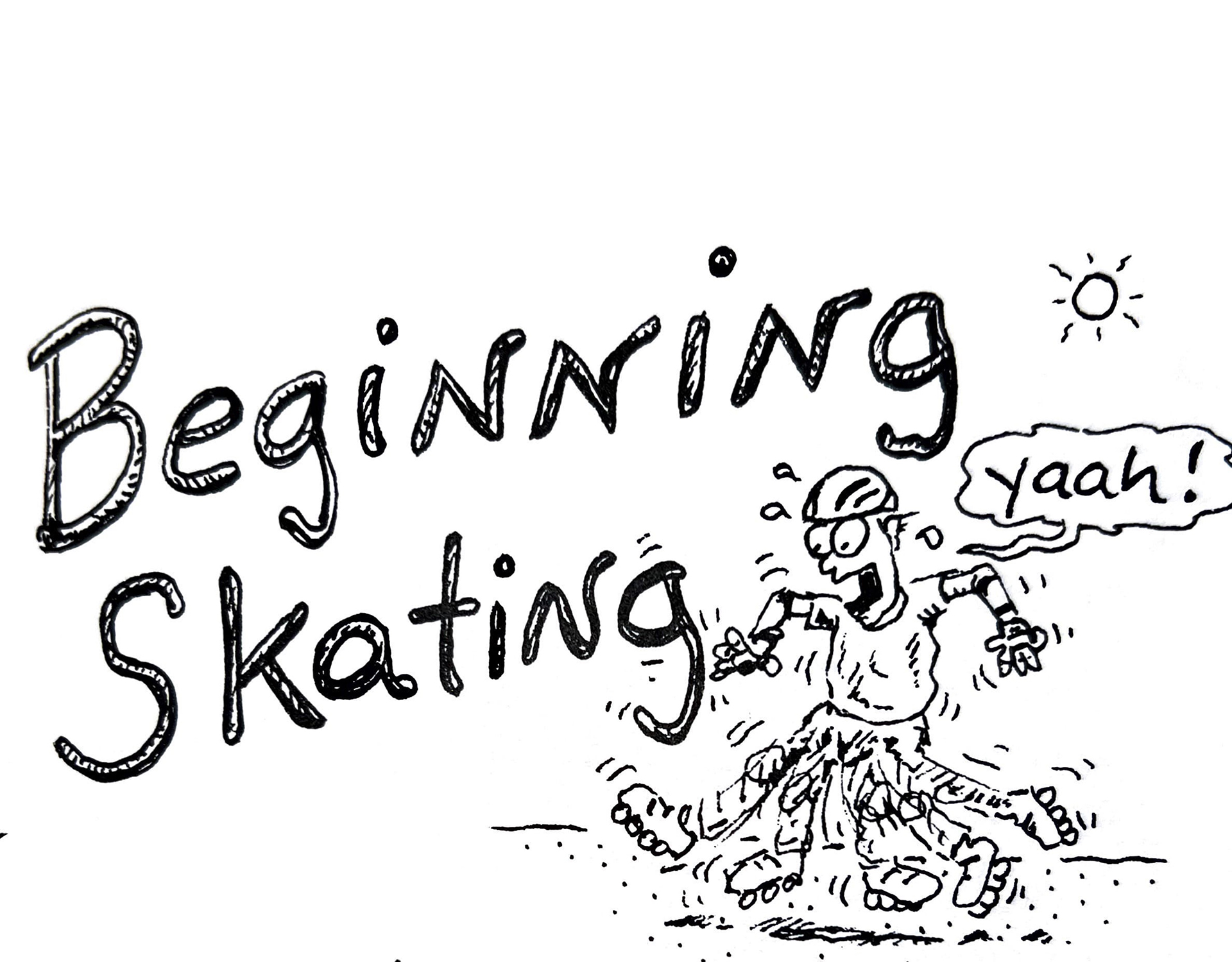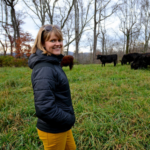
The Coolest Guy in the World
Daniel Wallace interprets two pages from the revealing, long-lost journals of his brother-in-law, William Nealy.
This Isn’t Going to End Well is a book buttressed by two competing realities: how my brother-in-law, William Nealy, presented himself to the world in his own words as “one of the coolest guys in the world,” and his interior, secret self, which was quite the opposite.
I knew William most of my life and like everyone else knew him solely as the former, as an artist, a writer, author of ten books, icon in the world of adrenaline sports. But when I found his personal journals in the back of a cricket-infested closet, ten years after he died, I discovered his other self. The journals span three decades and are revelatory. They also illuminate his mind in complicated and amusing ways, because, even in his deepest, darkest despair, he was still funny. Here are two random but representative pages, which I’ll explicate sentence by sentence. You’ll get the idea.
These two pages constitute an entry he made on December 4, 1996, five years before he died. Most of his entries begin with the date followed by a somewhat mysterious shorthand: “BP.” I’m pretty sure this refers to back pain, and the number, out of ten, indicative of how much he was suffering from it. He refers to his backpain in his suicide notes as one reason he was going to kill himself.

The scrawled arrow indicator at the top of the page charts his day like the Dow Jones Industrial. Starts low, and moves up and down throughout the day.
The next few short sentences describe what he did that day. By reading William’s journals you get a pretty good idea of what he did every day, the minutiae of his life, so much so I feel like I could reconstruct it, follow his trail step by step, everything from phone calls to taking a shower. And here we have Cleaned van. He cleaned the van often. The van was an essential feature of the life Holly (his wife and my sister) and William lived together. It was more of a life-support system than a van, actually, accessorized for Holly, who was riddled with rheumatoid arthritis. It carried clothes and a day’s worth of food and a week’s worth of Glenfiddich, Holly’s favorite scotch, fishing supplies, a bed, blankets and pillows, a blaring Nealy-installed sound system, a shelf of books and magazines, a police scanner, a CB radio, walkie-talkies, a box of tools, and a kayak strapped to the top because you never knew when there might be a river to run. There was also a handgun taped to the underside of the wooden support that William had built for the bed, because once a Boy Scout, always a Boy Scout. Be prepared. It's how he and Holly went on trips together, to Washington, D.C., where my oldest sister lives, to various whitewater outlets, to Birmingham where Holly and William (and I) grew up for holidays, and where he tried to solve the murder of his best friend, Edgar, and finally to the lake in Virginia where they kept their houseboat, about an hour and a half away. The houseboat was in the very first slip, at the bottom of a long wooden walkway. I never went out on the houseboat with them, even though they had it for years. The first time I went out there was after William killed himself. His original plan was to do it on the houseboat, but he changed his mind at some point and walked into the woods late one night, and did it there.
The journals, which span decades, don’t mention me very much. I would have thought I took up a little more space in his brain, having been in his life since I was twelve, and spent a lot of time with him fishing, riding mountain bikes around town, drinking beer and hanging out. But I do appear in this selection. Daniel got very drunk at Mineral Spring (ha ha). Mineral Springs Farm is the compound my father owned on the Eastern Shore in Maryland. I don’t remember getting drunk there. Not sure why he thought this was worth mentioning, or how I’m supposed to interpret the “ha ha.”
Moving on. Skip Pristeria. His psych appointment. Then, Steph at 12:40. Don’t know who Steph was. Maybe another therapist? It was a good visit, he writes. Something good — a rarity in these journals; many if not most of the entries are pretty bleak. But look what they talked about at the session: my sister’s diseases, depression, “existential anxiety” — a comprehensive overview of William’s ailments. Then another reference to his physical ailments: back pain, hip pain. His deteriorating body is a motif of his suicide notes. William was an avid adrenaline sports aficionado; he kayaked, climbed mountains, was brave and crazy on a mountain bike — he even climbed trees. There was a towering oak in the forest behind their house, and he built a platform on some branches about fifty feet up. He’d tie himself on it with bungee cords and sleep there, nothing on either side to hold him in. But as his spinal cord deteriorated and disallowed serious outdoor adventure (he took up rollerblading his last few years) he lost a part of his identity. The first time I saw him, in 1972, he was diving off the roof of our house into the pool below. That’s who he was all of his life until he couldn’t be that person anymore. This was the deadly cocktail, the dual disintegration of his body and his spirit.
It was a good visit, he writes. Something good — a rarity in these journals; many if not most of the entries are pretty bleak. But look what they talked about at the session: my sister’s diseases, depression, “existential anxiety” — a comprehensive overview of William’s ailments. Then another reference to his physical ailments: back pain, hip pain. His deteriorating body is a motif of his suicide notes.
Nap.
After the nap, an electrician comes to fix some unspecified problem. Much better general mood, William writes. Again, coming upon something like this, I realize how he could live for as long as he did, with these brief bright moments. But in parentheses — Lortab, Percocet, coffee; and at the bottom of the page, Restoril and 2 Flexeril. He lived a life buoyed by drugs, prescription drugs for the last decade or so.
But here’s a cool note. Somehow William learns the electrician smokes “old toad.” Smoking toad is a hallucinogen, a Mesoamerican ritual. (According to the internet, Hunter Biden smokes it and so does Mike Tyson.) The electrician, it was pretty expensive — “couple hundred bucks.”
Finally, here is the heart of William’s creative life: his drawing. William used his journals to sketch out ideas, potential cartoons, exploration of details associated with his books. This is just another way he was a remarkable and complicated man: on one page he’ll write about his suicidal ideation, and on the next sketch something pretty funny. I don’t understand all the drawings here. What’s a newspaper tree? And the butter-dish reference: no idea. At the bottom of the page is a preliminary sketch for his last book, . Most of his books are “diaries of my learning,” manuals with clever asides: whitewater, mountain climbing, how to ride a bike, etc. Here he’s illustrating something he calls “the beginner’s shuffle.” The final version looks like this:

William knew a lot, and everything he knew he taught himself. Then he shared what he learned with the rest of us. Teaching and taking care of us, his friends and family, humor and art: This is what kept him alive until he was almost fifty years old.


